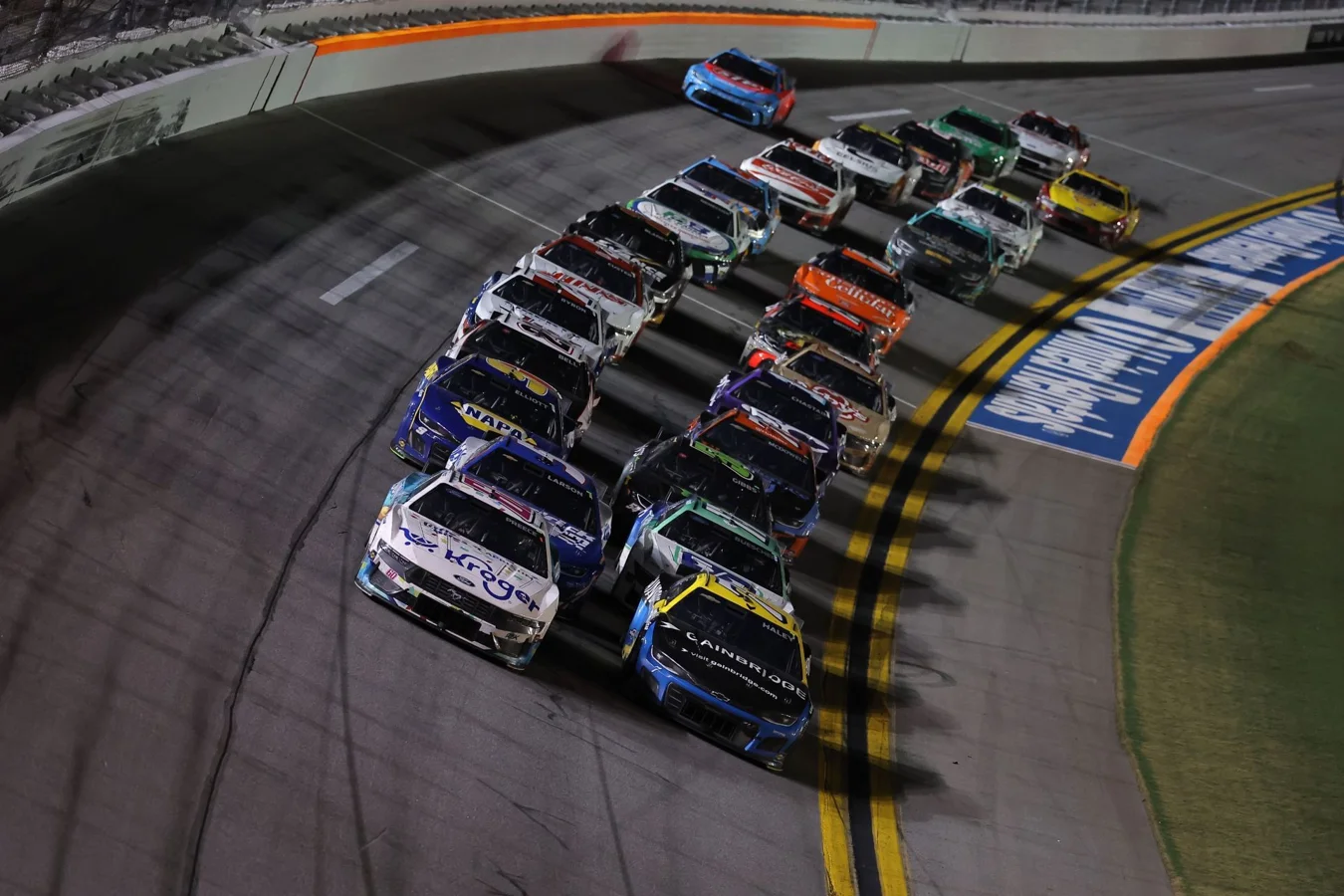Ryan Preece responded to criticism after making a split-second choice to part ways with his teammate Chris Buescher during the latest race at Daytona International Speedway, emphasizing that his decision aimed to create the best opportunity for a win. The debate over his actions unfolded amid intense fan reaction, with Preece speaking out to explain why he left Buescher late in the race—a pivotal moment that has since fueled discussions across the NASCAR community.
Preece Justifies Leaving His Teammate During Daytona Race
In the closing laps of the Coke Zero Sugar 400, Ryan Preece found himself behind Justin Haley, while Buescher closely followed in the sixth position. When Haley briefly moved into the lead, Preece quickly shifted to the outside lane to challenge for the front. This maneuver, however, resulted in Buescher being left on his own as Preece took command after maintaining a strong position in the top five for 33 laps. Reactions from fans were swift, with many asserting that Preece had abandoned his teammate at a critical juncture.
Preece addressed the backlash on the RFK Racing podcast, Backstretch Banter, shedding light on what led to his decisive move at Daytona.
“People can Monday quarterback that all day long, right. ‘Hey, Why would you get rid of your teammate or why would you move away from them?’ But sitting in the position that Chris and I were in, it was highly unlikely we would have ever got clear, both him and I, of the guys on the outside in that moment as well,” he said (via X/ Steven Taranto, 1:30 onwards). —Ryan Preece, Race Car Driver
“I didn’t want to get stuck behind the seven and not have an opportunity to win. So that was the game time decision of we need to put ourselves on the front row to take control and have an opportunity to win,” he added. —Ryan Preece, Race Car Driver
Moments after Preece looked poised for victory, Kyle Larson executed a similar move by leaving his draft line and forming a third lane. This development forced Preece into a vulnerable position in the middle, where he lost ground as multiple cars powered past him, reshaping the race’s outcome in the final laps.
Late-Race Tactics by Larson and Elliott Influence the Outcome
After the race, Ryan Preece openly called out the actions of both Kyle Larson and Chase Elliott, who opted to form a new lane near the finish at Daytona. According to Preece, their strategic play appeared aimed at protecting their Hendrick Motorsports teammate, Alex Bowman. At the time, Bowman’s playoff hopes were hanging by a thread, as Preece securing the win could have pushed Bowman out of contention.
“The problem is the 9 (Chase Elliott) and the 5 (Kyle Larson) were worried about their teammate that would have been bumped out. So shi**y situation, thought we were going to win that one because we did everything right today and just didn’t work out,” Preece said in a post-race interview with Frontstretch. —Ryan Preece, Race Car Driver
Preece admitted he needed stronger support from drivers around him, suggesting that a network of allies could have changed his fate. Despite the frustration, he acknowledged that the HMS competitors acted in their team’s best interests, a decision he ultimately respected. The impact of team strategy became even more apparent as Alex Bowman’s position was in real jeopardy. Bowman, already disadvantaged from a 12-car wreck earlier in the event, would have faced elimination if a fresh winner emerged.
Strategic Moves Alter Daytona’s Closing Laps and Championship Prospects
Kyle Larson and Chase Elliott‘s decision reverberated through the results, with Ryan Blaney ultimately capitalizing by joining the third lane and charging from 13th to the lead. This move not only halted Bowman’s potential elimination but illustrated how split-second tactics can dramatically change race results and playoff implications. At the heart of the drama, Ryan Preece’s decision remains central to conversations about Daytona’s closing laps, as he sought victory but instead became a focal point for controversy and debate within the NASCAR fan base.
As the dust settles from Daytona, the incident underscores the high-pressure environment drivers like Preece face when making real-time choices. The aftermath may prompt drivers and teams to rethink alliance strategies in future races, knowing that every decision on track can tilt career paths and championship battles for multiple competitors.
